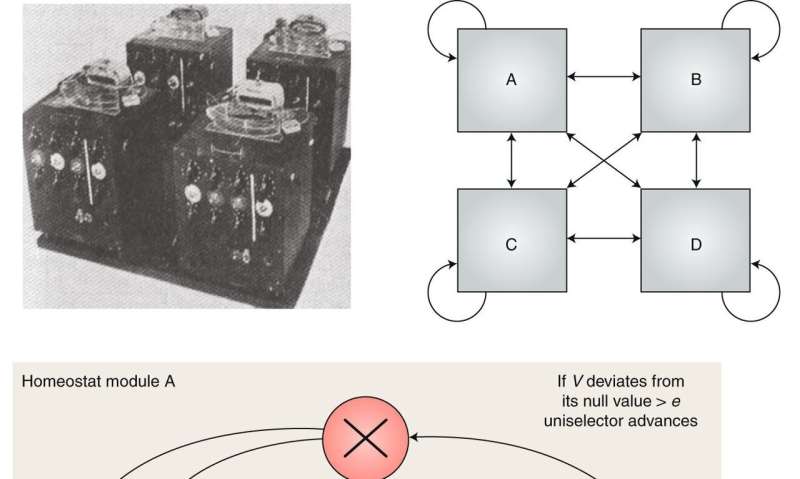November 13, 2019 weblog
Could AI's next chapter bring design of feeling machines?

Could robots with feelings be the next step in AI? A research paper discusses an interesting approach to robot design. It is titled "Homeostasis and soft robotics in the design of feeling machines" in Nature Machine Intelligence.
No need to see the robot as an enemy just because it takes on a robotic version of human feelings; the train of thought that the authors take is a distance away from fear and trembling by some futurists who ponder robots turning against their masters in an upside-down switch of master-servant roles.
Rather, Kingson Man and Antonio Damasio, the authors, choose to focus on machines acquiring homeostasis. Man and Damasio are with the Brain and Creativity Institute, University of Southern California, Los Angeles.
Feelings are a mental expression of the state of life in the body and play a critical role in regulating behavior. "Our goal here is to inquire about conditions," said the authors, "that would potentially allow machines to care about what they do or think."
Jan Cortes in Medical Daily: "The gist is simple: Simply build a robot that would have the ability to be aware of its existence, and the perils of it... a modern A.I. brain could easily develop feelings and behavior that will help guide it to self-preservation and survival."
The authors said that "A robot engineered to participate in its own homeostasis would become its own locus of concern. This elementary concern would infuse meaning into its particular information processing."
What is homeostasis? To borrow a definition from OpenCurriculum, "Homeostasis refers to stability, balance, or equilibrium within a cell or the body. It is an organism's ability to keep a constant internal environment."
The authors proposed a new class of machines on the principles of homeostasis. "We aim to build robots with a sense of self-preservation." They wrote that "The resulting machines would (1) exhibit equivalents to feeling; (2) improve their functionality across a range of environments; and (3) constitute a platform for investigating consciousness, intelligence and the feeling process itself."
Christina Daumann in Asgardia dove further into what the authors want to explore:
"Neuroscientists think robotics must follow suit after living organisms whose survival relies on homeostasis...All living organisms, from algae to kittens, have to regulate their internal environment to survive. Could robots capable of implementing a process that resembles homeostasis acquire a source of motivation? A machine's awareness of its internal state could evolve into a robotic equivalent of feelings and make robots much smarter, according to the authors."
And to get there, they would draw on developments in soft robotics.
Keeping in mind the goal would be machines designed to feel vulnerable, soft robotics would be the choice. Medical Daily and other reports recognized that soft robotics can enable the process of "translating computations into existence-sustaining behaviors."
The authors wrote, "Soft materials accommodate themselves to objects rather than shoving objects aside. Under stress, they deform without breaking, then enter dysfunction or gradual decline instead of suffering sudden catastrophic failures. In many cases, soft materials can self-heal, regaining much, if not all, of their pre-injury structural and electrical properties." '
Why can't metals and hard plastics, otherwise so ubiquitous in robotics, help out such research efforts? The authors stated that such durability comes at a cost. "An invulnerable material has nothing to say about its well-being. It rarely encounters existential threats. If we imagine strain gauges embedded throughout a hard surface, they would spend most of their time reporting 'no change'. The hard knocks of life accumulate until finally a catastrophic failure occurs, and the sensors cry out in unison."
The "rigid robot" is unfeeling by design, they said, an implacable face to the world.
All in all, in their world, "vulnerability" becomes a design principle, and they proposed to extend it down to the "stuff out of which the robot is made." They said strain gauges embedded in the volume of a soft material can localize forces and signal graded disruptions in body surface continuity, such as those caused by punctures and tears.
As Cortes stated in Medical Daily, their strategy involves an exploration in how "building machines imbued with the artificial equivalent of feeling can be made."
So it is not as if the authors are hampered by delusions that robots are potentially capable of being just like humans but rather that these can be designed with self regulation qualities to improve their functionality.
"Even if they would never achieve full-blown inner experience in the human sense," said the authors about the robots, "their properly motivated behaviour would result in expanded intelligence and better-behaved autonomy."
Daumann in Asgardia said why their research matters and what could change: "...having feelings could make machines seek optimum states for survival. An intelligent machine with a sense of its own vulnerability should be acting in a way that would minimize threats to its existence. Such a machine could learn to devise new methods for its protection, instead of relying on pre-programmed solutions."
More information: Kingson Man et al. Homeostasis and soft robotics in the design of feeling machines, Nature Machine Intelligence (2019). DOI: 10.1038/s42256-019-0103-7
© 2019 Science X Network

















